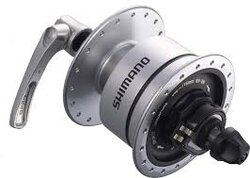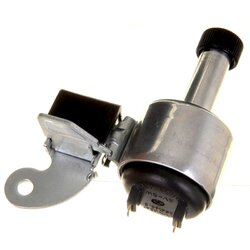18650 is rated 2200-3600 mAh, according to
http://en.wikipedia.org/wiki/List_of_battery_sizes, and the AA rechargeables I have are similar. So I'd expect runtime to be similar.
The difference is the voltage. AA rechargeables are 1.2V, where 18650 cells are I think 3.7V. I'm not sure if the Li-ion battery pack has them wired in series, or parallel, though... Anyone know?
@Lanzecki?
All Single Cell non-rechargable AAA, AA, C, D and all the wacky variations made to get your money Give 1.5V.
The rechargable versions give 1.2V but generally a better Wattage.
18650's describe the physical size. 18.6 × 65.2mm A single cell give 4.2v upto 4000mAh.
Generally a 4 cell lipo pack will have 2 cells in series and 2 in Parallel giving 8.4v at upto 8000mAh .
A 2 Cell lipo pack will be wired parallel giving 8.4v upto 8000mAh
All the packs I've opened (even the really cheap ones) have protective circuits. These stop over charging, under charging and over heats. Buying single cells, you won't have this circuit.
To get the same output from AA's as a 18650 is not just about matching Volts, but mAh. The physical size, weight and recharge time would out weigh any benefit over the 18650 Lipo cells. Modern lipo cells are much safer then they used to be if that is your worry.
Without considering it, I would be concerned that the AA cell's cannot discharge quickly enough and you'd get internal damage. Ni-Cad and NIMH can and do blow up. Trust me when I say don't stick Ni-Cad cells in a charger backwards. Heck stick an alkaline cell in a charger and watch (with PPE gear and a fire extinguisher)
and should the worst happen, how on earth does one tackle a lithium battery fire?
Yup. DON'T USE WATER. Use a charging bag. Or a bucket of sand. I charge mine by a window. Not that I'm worried they will blow, but it's nice to be able to lob them out if something goes wrong.
As
@w00hoo_kent says don't leave them alone, even if you think you know them. Treat them like a newborn. They don't take long to charge. Simple precautions will ensure safety:
Don't use a pack or cell if it's damaged. Especially if it's got bulges or the heat shrink looks melted.
Use a proper charger. Not a modified Ni-Cd charger.
Don't leave packs unattended.
long term storage should (ideally) have the battery charged to 75% before packaging. Next best is fully charged. And topped up every 3 months in either situation.
Notes: Packs are not charged by time. The charger / protection circuit decides when to stop. Charging for X hours because that's how many hours it needed last time (like Ni-CAD) to charge is dangerous. But using a factory built pack and correct charger (LIPO) will negate that problem.
If you wonder if you have the control circuit buried away in that pack, you do. No idiot is going to sell un-protected packs. Well not for long. To check this, note that the cable that connects to the light doesn't go to the top of the cell's but usually down the side to a bulge. This is the control circuit. It's very small.
To double check you have one, turn the light on and wait, the light will eventually turn off (like the switch was turned off, not a fade out). This is the circuit stopping the power to protect the cell's from discharging too far. The light output will drop some, but it'll be a on one min, off the next.






